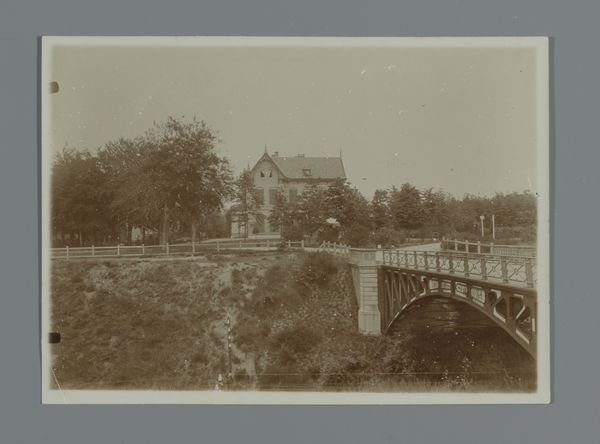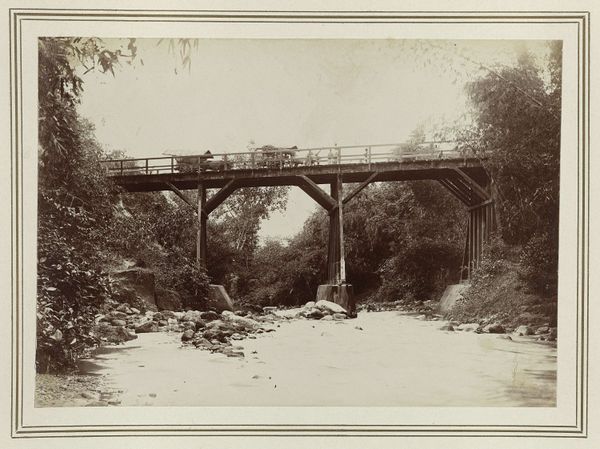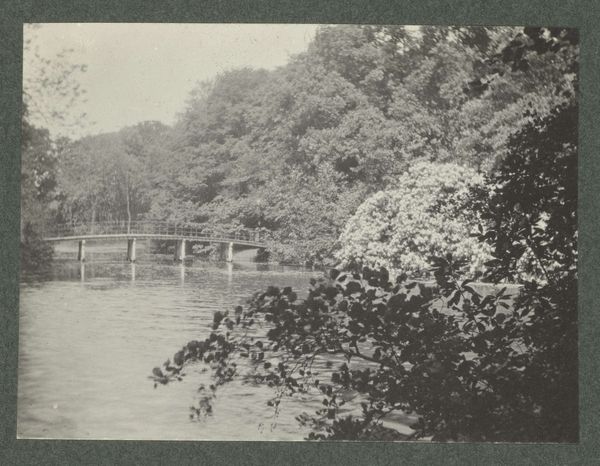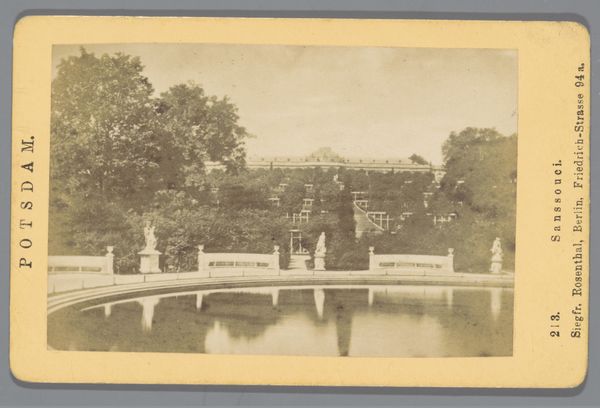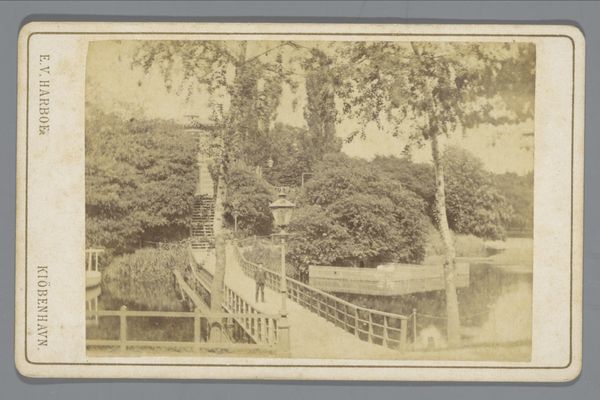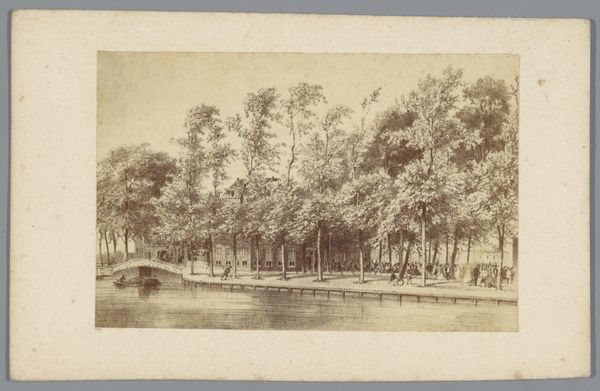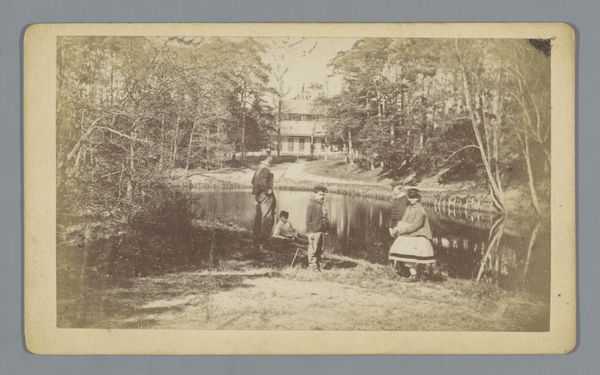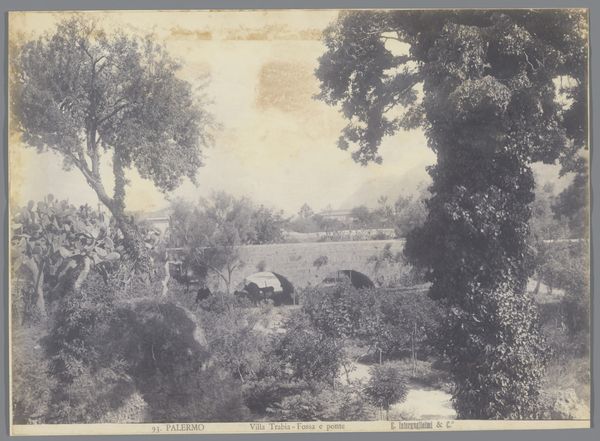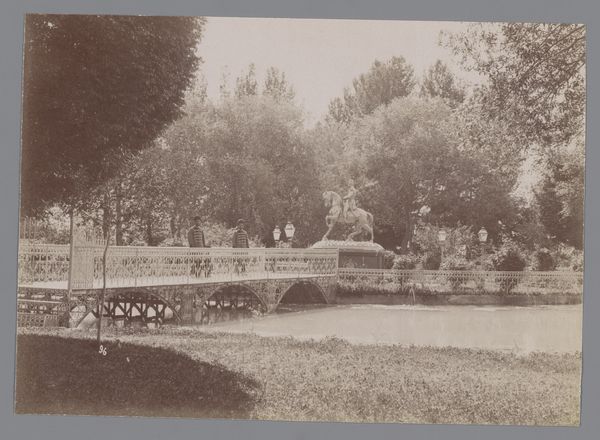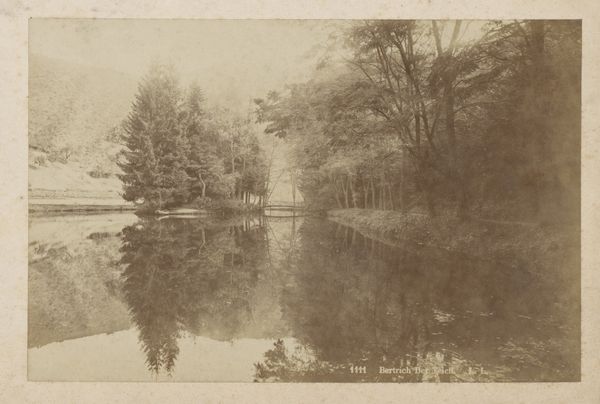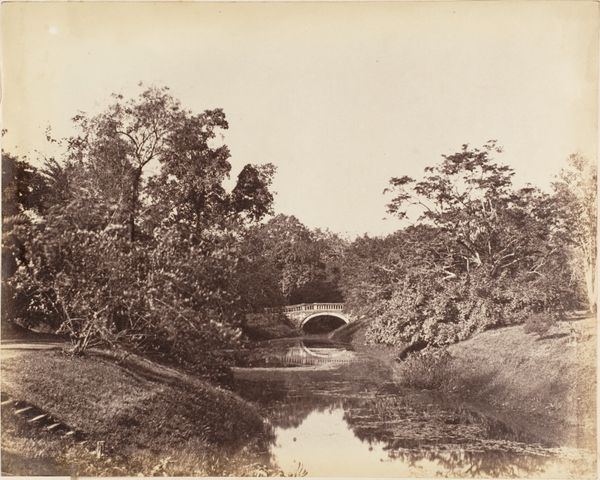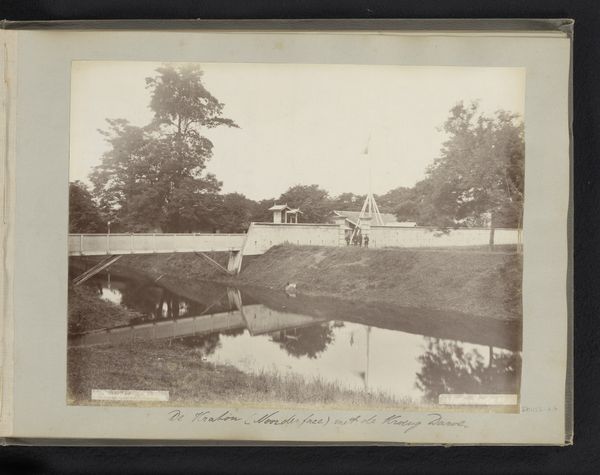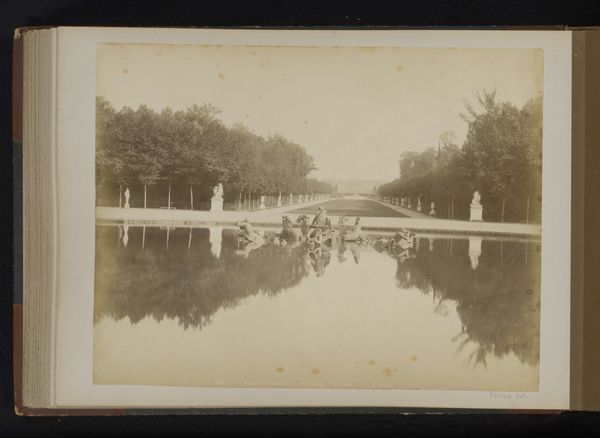
#
aged paper
#
toned paper
#
homemade paper
#
ink paper printed
#
personal sketchbook
#
coloured pencil
#
park
#
watercolour bleed
#
watercolour illustration
#
paper medium
#
watercolor
Dimensions: height 107 mm, width 166 mm
Copyright: Rijks Museum: Open Domain
Editor: This lovely piece, “Gezicht op een brug in het Vondelpark te Amsterdam,” created by Andreas Theodorus Rooswinkel sometime between 1850 and 1900, seems to capture a serene moment in the park, rendered in delicate sepia tones. The reflection of the bridge in the water adds a dreamy quality. How do you interpret this work, particularly within its historical context? Curator: This image is a portal, isn’t it? We see a romanticized vision of the Vondelpark, but let’s think critically about whose experiences are centered here. Parks like the Vondelpark were often designed with bourgeois sensibilities in mind. How accessible and inclusive was a space like this in the late 19th century, really? Editor: That's a good point. The photograph does present a very idyllic, perhaps even idealized, scene. What details might point to the social context you're describing? Curator: Notice the bridge: it elegantly connects one side of the park to the other, but who does that connection truly serve? The working classes of Amsterdam likely experienced the park differently than the wealthy residents strolling across that bridge. Their access might have been limited, their leisure time scarce, and their presence perhaps even discouraged. And the swans – symbols of purity and grace – are they meant to evoke a specific class aesthetic? Editor: It’s fascinating to consider those layers. I initially just saw a pretty picture. Curator: Exactly! Recognizing these layers is crucial. It forces us to confront how landscapes are never neutral; they are always imbued with power dynamics. Who gets to enjoy them, and under what conditions? Editor: I’ll definitely look at similar works differently from now on, considering not just the beauty, but also the unspoken narratives. Curator: Precisely. This is how we ensure that art history becomes a tool for critical engagement, uncovering hidden social and political meanings.
Comments
No comments
Be the first to comment and join the conversation on the ultimate creative platform.
